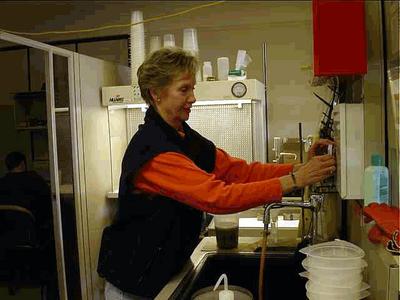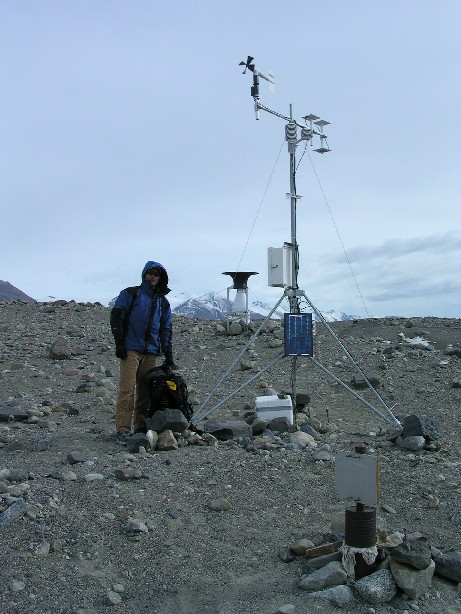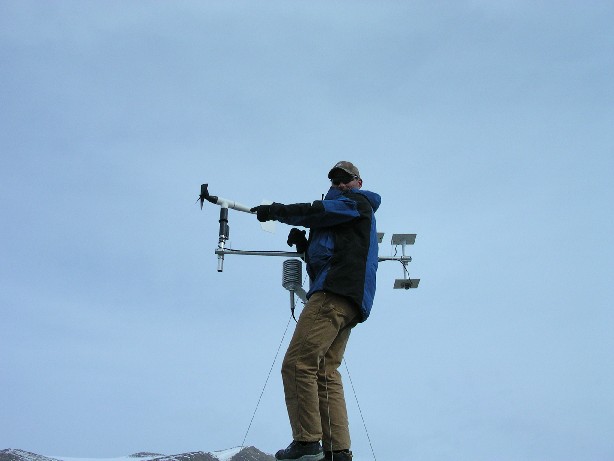|
The
normally elongated and cylindrical nematodes aren't so elongated
and cylindrical when being blown around. Instead, says Jeb,
they look uncannily like little cheerios. That's because
they're in their anhydrobiotic or freeze-dried state. Anhydrobiosis
is a process in which microscopic organisms lose 99% of
their body water, leaving only the water bound to cell membranes.
Dry Valleys' nematodes start the process as soon as they
sense a loss of relative humidity in the soils. In addition
to losing water, they change "their metabolic pathway
to produce an anti-freeze, change their morphology to that
of a cheerio, which reduces their surface area, and then
go into a non-metabolic state," explains principal
investigator Dr. Diana Wall of Colorado State University.

Diana works with nematodes in the lab
Photo by: Louise Huffman
Diana
has shown that anhydrobiosis is the main way that the nematodes
survive the harsh Antarctic winters. By minimizing the amount
of water in their bodies and by producing antifreeze, the
organisms prevent sharp ice crystals from forming that could
rip cell walls and cause serious damage, a phenomenon we
experience as frostbite.
|
|
Winds are a fact of life in the
Valleys. You quickly learn to tie down or put rocks on everything
otherwise you'll end up chasing wayward bags, papers, and cardboard
boxes to the chagrin of the environmental folks back in McMurdo
and to the amusement of your teammates. It is the wind that will
suck the heat from your body and chill you to the bone. It is
the wind that will rub your face raw and make you feel like you
have been burned. And it is the wind that helps shape the valleys
and make them what they are.
|
Water vapor and specks of
dirt aren't all that's airborne in the valleys. Two-feet
high sediment traps that look suspiciously like upside down
bundt cake pans have revealed that microscopic nematodes
are blowing around as well, says Dartmouth soil ecologist
Dr. Jeb Barrett. These worms are among the most highly evolved
animal life in the valleys, and winds seem to be an important
means for their dispersal.
In Taylor Valley where we
spend most of our time, typical winds have speeds of between
five and ten miles per hour. Katabatic winds like the ones
that put two of our tents out of commission can reach speeds
of 90 miles per hour. Such katabatics can have a dramatic
effect on local air temperatures, one that you might not
expect. As the winds plunge some 6000 to 12,000 feet off
the polar plateau and descend into the valleys because of
gravity, they are subject to an atmospheric pressure that
is greater closer to sea level, explains Thomas.
|

Jeb by a bundt cake pan sediment
trap |
This rise in pressure causes the temperature
of the air mass to increase adiabatically, without input from an
external source of heat. During the winter when the strongest katabatics
occur, the winds can increase local air temperatures by as much
as 30 degrees Celsius.

Thomas
by the Explorer's
Cove Meteorological Station |

Thomas points to the station's anemometer, an instrument
that measures wind speed
and direction. |
|

